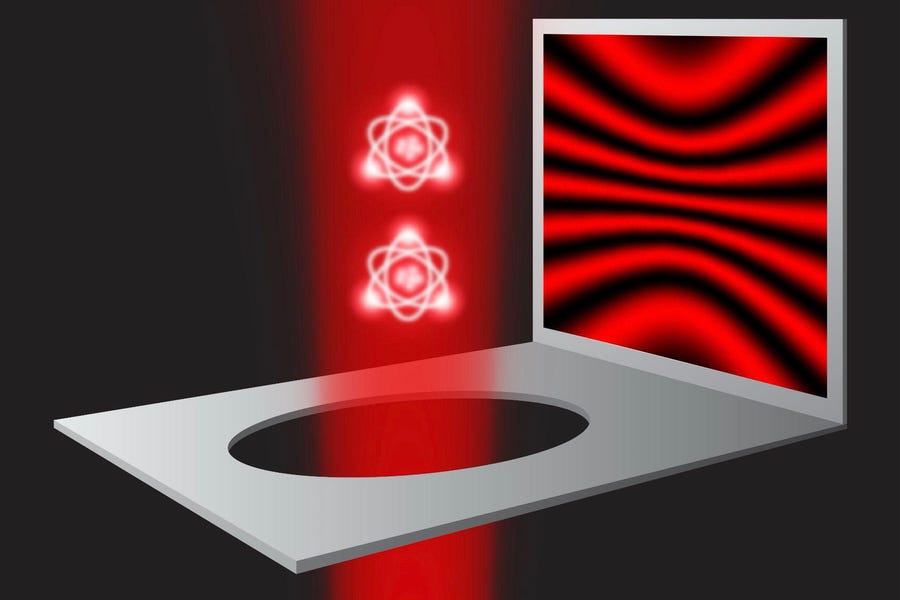MIT Just Settled the Einstein–Bohr Debate about Light
MIT Just Settled the Einstein–Bohr Debate about Light

Earlier this year, while leafing through Physics of the Impossible by Michio Kaku, I found myself lost again in the old ghost story of quantum physics: the mind-bending idea that light can act as both a wave and a particle, but only until you try to look at it.
Let’s start from 1927 when somewhere in Brussels, two of the world’s greatest minds argued about something so tiny that you can’t see it with your eyes, yet so strange that it would change how we see the entire universe.
One side of this debate was Albert Einstein, the father of relativity. On the other side stood Niels Bohr, the stubborn champion of quantum mechanics.
At the heart of their fight was a simple but maddening question: Can light be both a wave and a particle at the same time?
To understand why this matters, imagine you’re throwing pebbles into a pond. The ripples spread out in waves. But imagine you could somehow throw just one “pebble”, like a photon, the smallest bit of light. Weirdly, when physicists shoot single photons at a barrier with two tiny slits (two narrow openings), the photons create a wave-like pattern of stripes on a screen behind it.
This is called an interference pattern, and it only happens if light acts like a wave, spreading through both slits at once and creating overlapping ripples.
But when you try to check which slit the photon actually went through, the interference pattern disappears. Suddenly, the photon acts like a tiny particle, as if it chose just one slit. This strange switch in behavior is what drove Einstein crazy.
Einstein couldn’t accept that reality was this unpredictable. He thought we could outsmart quantum rules. He imagined an experiment where you’d detect the tiny push of a photon passing through a slit, like spotting a bird brushing against a branch. He believed you could know which slit it passed through and still see the wave pattern on the screen. If we were clever enough, he thought, we could catch nature’s secrets without disturbing them.
But Bohr argued this was impossible. His answer? The uncertainty principle.
Bohr and his colleague Werner Heisenberg said that at tiny quantum scales, there’s a built-in limit to how much we can know. The more precisely you measure a particle’s position (which slit it goes through), the less precisely you can know its momentum (how it moves). If you try to pin down one, you blur the other.
So if you peek at the photon’s path, you destroy the interference pattern. You can’t have both at the same time. Reality itself refuses to be pinned down like that.
This radical idea became a cornerstone of quantum mechanics. But Einstein never gave in. He famously said,
“God does not play dice with the universe.”
A century later, MIT puts it to the test
In July 2025, physicists at MIT announced the cleanest, most precise version of Einstein and Bohr’s thought experiment ever done.
They didn’t use big metal slits. They used over 10,000 ultracold atoms — cooled to near absolute zero — and arranged them in a perfect crystal lattice using lasers. Each atom acted like a microscopic slit.
They then shot single photons through this “crystal of slits.” Here’s the cool part: by tweaking how fuzzy each atom’s position was (its quantum uncertainty), they could control whether the light acted more like a wave or a particle.
What did they find?
When the atoms were fuzzier, their positions less certain, the photons spread out like waves and made an interference pattern. But when the atoms were pinned down more precisely, the photons acted like particles. The more the scientists tried to “spy” on the photon’s path, the more the wave pattern disappeared.
In other words, Einstein’s idea of having it both ways failed. Bohr’s uncertainty principle held strong.
Why does this matter today?
This experiment, published in Physical Review Letters on July 22, doesn’t just prove who won an old debate. It shows that quantum weirdness is real, and built into how nature works.
No matter how advanced our technology gets, we can’t outwit these rules. There is no secret path hidden behind the curtain. If you measure one thing too precisely, you lose information about the other.
It’s not just about photons. This is true for electrons, atoms, and anything small enough to follow quantum rules. That’s why your phone, your computer chip, and your future quantum computer all rely on engineers and scientists understanding this dual nature of tiny particles.
Why now?
2025 is the UN’s International Year of Quantum Science and Technology, 100 years since quantum mechanics was born. It’s fitting that we’re still learning new lessons about the same strange questions that Einstein and Bohr argued over in the 1920s.
Wolfgang Ketterle, the MIT physicist who led the experiment, put it perfectly:
“Einstein and Bohr would have never thought that this is possible, to perform such an experiment with single atoms and single photons.”
So what does light really do?
The answer is simple yet mind-bending: light can act like a wave or a particle, but never both at once. How we look at it, how we measure it, shapes what it becomes.
It’s like nature is reminding us: some mysteries stay mysterious, not because we’re not smart enough, but because the universe plays by its own strange rules.
Einstein might still protest. Bohr would just smile.
If you’re fascinated by this phenomenon, I encourage you to check out QED: The Strange Theory of Light and Matter by Richard Feynman. The quantum rabbit hole goes deep. One of the reasons I want to retire early to explore these interests sparked by my eclectic collection of books.

